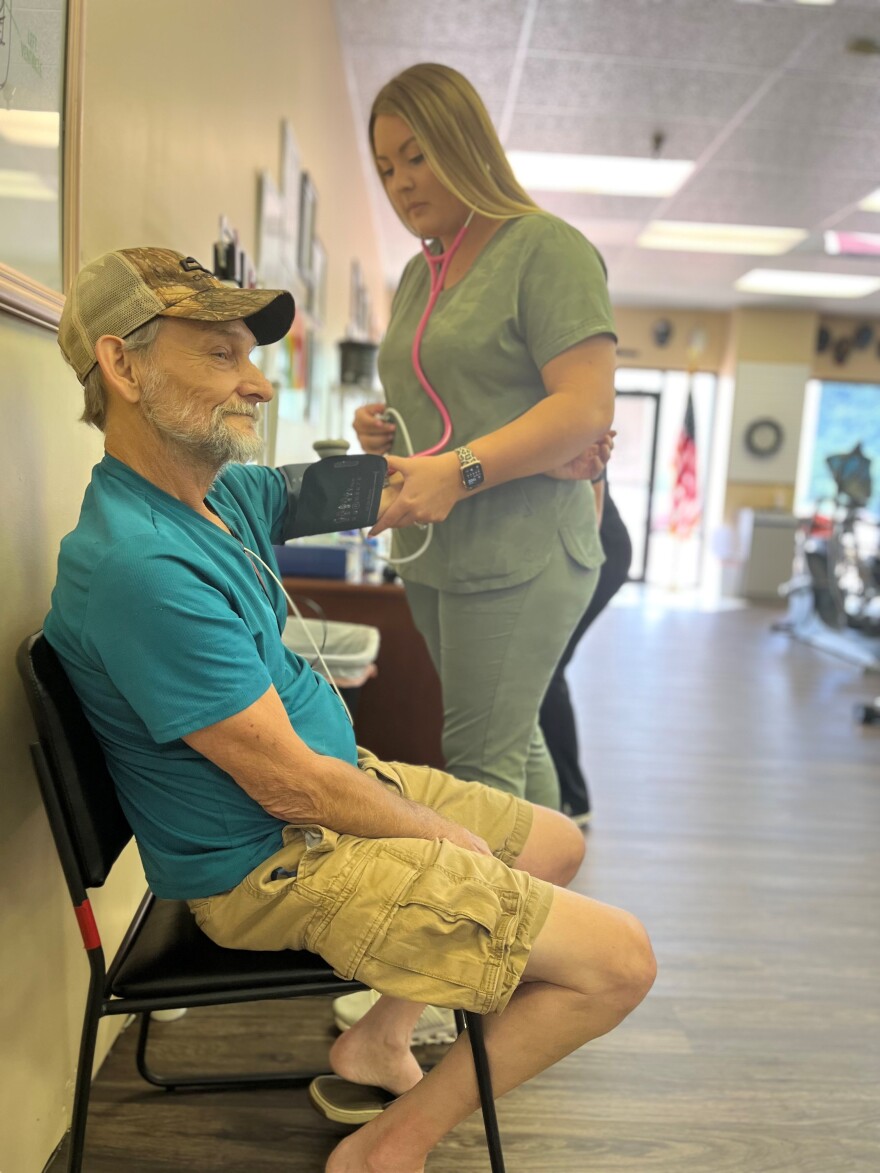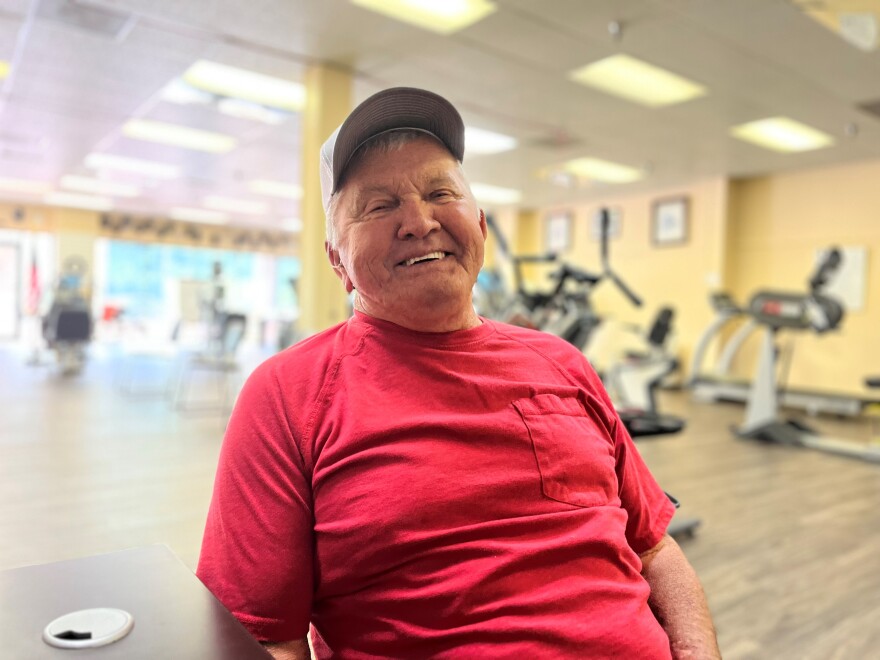Update:
On Friday, June 30, the federal Mine Safety & Health Administration proposed new rules to reduce exposure to silica dust in mining industries.
Read more about the new rules here.
Original Story:
Michael Bentley knows how he got black lung.
“I mean, you’d come out and you’d just be like a ghost. You’d just have dust all over you,” Bentley said.
Silica dust gets trapped in lungs, causing irreparable damage. Miners who cut through rock are most exposed.
“It’s not really the big pieces, the stuff you can see,” Bentley said. “It’s the stuff that you can’t see.”
Bentley worked as a coal miner for 30 years, running a high wall drill, and a dozer, on strip mines.
Finally, his doctor told him if he didn’t stop working as a miner, he’d likely die within the year. So Bentley quit.
He loved working as a miner. But he regrets that he worked so long in unsafe conditions.
“Those coal company owners they don’t care,” Bentley said. “They’ll work you like a dog and when you drop, they’ll drag you off the side and go find somebody else.”
He has trouble breathing, but exercises regularly at New Beginnings Pulmonary Rehab in Norton, owned by Marcy Tate.
“If they stop and they sit down, they lose ground quickly,” Tate said.
Tate tailored this exercise program by helping her father, who also has black lung.
She and others across southwest Virginia have seen black lung return in staggering numbers.
“What we’re seeing is much sicker patients, much younger patients,” Tate said. “Somewhere around 2017-2018, we started getting 40 year olds with complicated pneumoconiosis.”

In the last few decades, the number of miners with advanced black lung has skyrocketed. Numbers are higher than ever recorded, says Scott Laney, an epidemiologist with the National Institute for Occupational Safety and Health (NIOSH).
"And our concern is that talking anecdotally with the clinics in southwest Virginia, eastern Kentucky, that it may be worse now than it was even five years ago."
11 years ago, Gary Cook's doctor diagnosed him with complicated black lung. “He said it would slowly eat my lungs up. And it’s about got em,” Cook said.
He comes to New Beginnings to use the treadmill and elliptical machine four days a week. He’s hoping to get a lung transplant, but even if that gets approved, it’s a tough recovery process.
There is no cure for black lung. It’s a terminal condition, which is why health experts are urging federal regulators to act more quickly.
“We know how to prevent black lung disease,” said Noemi Hall, an epidemiologist with NIOSH.
“And obviously for these men they were not protected against it.”
NIOSH recommends that limits for respirable silica be lowered to 50 micrograms per cubic meter.
The current limit set by the Mine Safety and Health Administration (MSHA) is 100 micrograms per cubic meter.
OSHA lowered their silica standards several years ago, but this doesn’t change limits in mines, since those workplaces are overseen by MSHA.
Numerous investigative reports by NPR show that federal officials have long known of the dangers of silica exposure. As far back as the 1990s, staff inside MSHA identified the need to have tighter regulations.
It’s taken more than two decades to get a draft of new silica limits to the White House for review.
“It’s the top priority at MSHA right now,” said Christopher Williamson, the current assistant secretary at MSHA, who was appointed by President Biden last year.
“And for the first time ever, MSHA has worked on and developed a proposed silica rule to better protect all miners’ health from potential exposure from silica,” Williamson said.
That new rule is now at the Office of Management and Budget being reviewed by other federal agencies. It’s been sitting there for seven months.
Six U.S. senators, including Mark Warner and Tim Kaine recently wrote the OMB, urging them to release the new standards.
“The people who are running these agencies, you know, they’re compassionate people and they want to solve this,” said Senator Tim Kaine. “I just don’t have a good answer for why it’s taking them so long, but we’re gonna keep pushing until we get a standard that will keep people safer."
MSHA officials had hoped to be able to release a draft of the new rule by the end of June.
In the meantime, MSHA is working to implement a new Silica Enforcement Initiative that the agency released last year, intended to have some impact on lowering the amount of silica dust in mines.
Through this new initiative, inspectors can collect dust samples from mines known to have a high-risk of exposures to silica, and Williamson said more work is being done to educate miners about their rights to make complaints about unsafe conditions.
This report, provided by Virginia Public Radio, was made possible with support from the Virginia Education Association.


